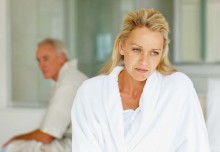
Do you have a sexual dysfunction? Use this brief guide to find out and get the help you need.
Sexual problems causing distress are so common that some people begin to believe they are just part of life. But they don’t have to be. There are lots of things you can do and professionals to help you. Here is a brief guide summarizing the different categories of sexual problems. Understanding these categories is the first step to getting the right help.
Sexual aversion disorder
This condition is just what it sounds like. A person with this condition has an intense dislike of genital contact with a sexual partner and feels disgust and revulsion towards sexual activity. It is similar to a fear or phobia so the person simply avoids sexual activity.
Hypoactive sexual desire disorder, or HSDD
A person with this condition has very little or no sexual fantasies or sexual desire. It takes into account the fact that sexual desire can change with age, physical health or personal life circumstances.
Combined arousal disorder
This diagnosis is used when a woman has no physical or mental sexual arousal. There are variations of this disorder called missed arousal disorder (a women’s body responds but she is not mentally aroused), and genital arousal disorder (a woman feels emotionally aroused and aroused from non-genital stimulation but lacks any pleasurable sexual sensations in her clitoris or vagina).
Sexual difficulties are so common some people believe they’re a part of life
Male erectile disorder, or ED
This one you know from all the Viagra commercials. It is the inability of a man to reach or maintain an adequate erection until completion of sexual activity. It can be due to physical, psychological, medical conditions, or medications.
Male orgasmic disorder
This is a delay or absence of achieving an orgasm after normal sexual excitement and activity.
Premature ejaculation
The man ejaculates with minimal sexual stimulation before or shortly after penetration, which is often distressing for both the man and his partner.
Male sexual pain
There are 4 categories and it is usually due to a medical condition
You may be referred to an MD, psychologist, social worker, or physical therapist
Female sexual arousal disorder
Women with this problem have very little response to stimulation and they don’t make enough lubrication for intercourse. There are several subtypes.
Female orgasmic disorder
This happens when there is a delay or lack of orgasm after normal excitement . If a woman is able to achieve orgasm with some forms of stimulation, but not with intercourse, this is considered within the normal range of sexual function.
Female dyspareunia
This is the term used for vaginal pain before, during, or after sexual intercourse. The pain may happen with entry into the vagina or as deep pain. Some of the causes include vaginal atrophy due to menopause, vulvodynia (a condition of the skin of the vulva), interstitial cystitis, endometriosis, and adhesions.
Vaginismus
This is an involuntary tightening of the outer part of the vaginal muscles that makes it difficult or impossible to have vaginal penetration, even if the woman wants to have penetration. It can also occur during pelvic exams, which makes it very difficult to perform an exam.
If you or your partner have any of these sexual problems, be sure to tell your healthcare provider. If he or she can’t treat them, they can refer you to someone who can . Depending on the situation, you may be referred to a physician, psychologist, social worker, or physical therapist.



